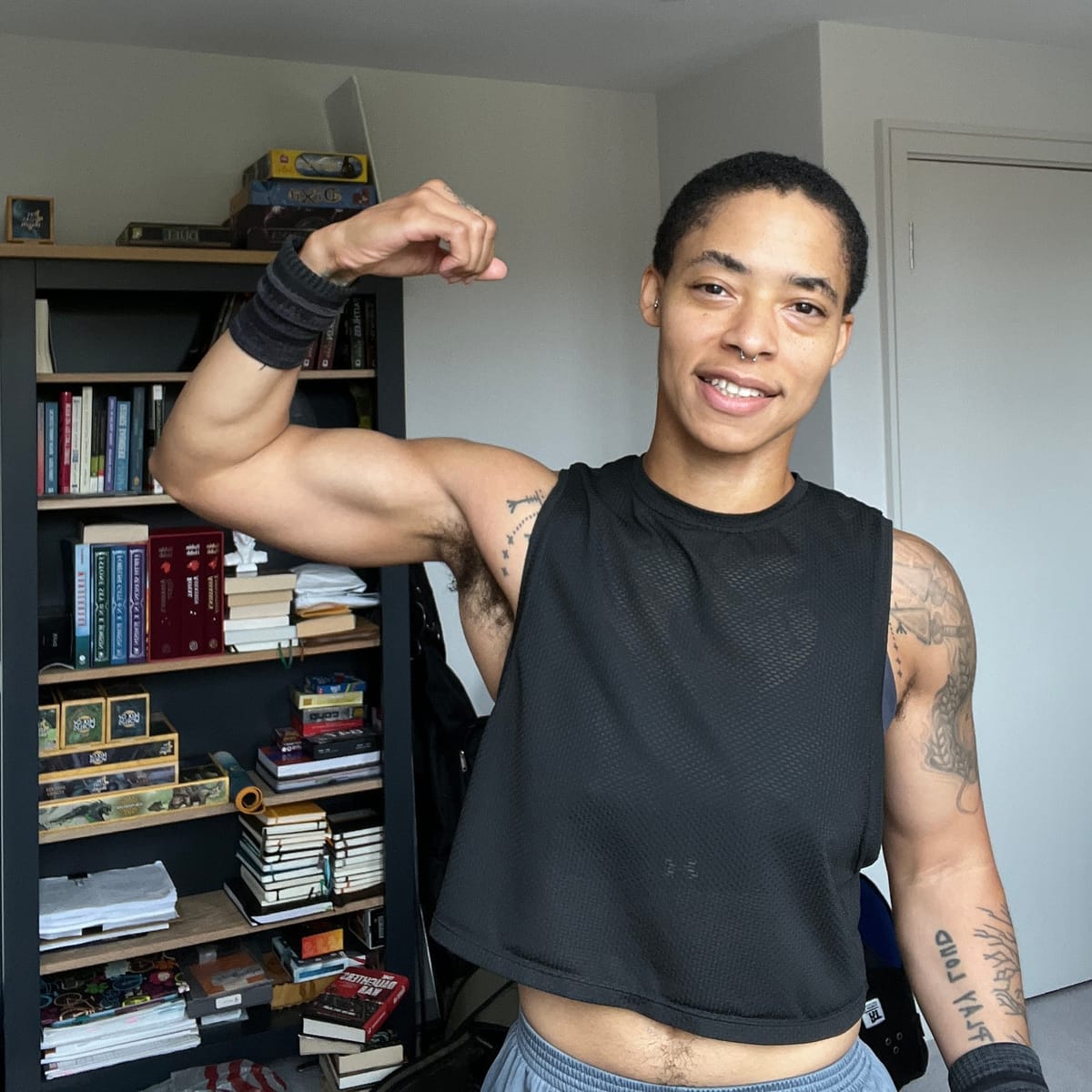Do you want muscles like C. L. Clark?
Because this is how you get muscles like C. L. Clark. The beginning of a small series.

let me sum up:
- pick a simple lifting plan that you know you can stick to that targets the whole body—the boring stuff works
- add more protein and more vegetables (fresh, frozen, etc.) (FIBER) (not french fries) (i tried) and eat less of the stuff you know you should eat less of (you KNOW what i mean)
- start slower/lighter than you think you can/should and get used to it
- track your workouts—how many reps, how heavy, and progress those numbers gradually
- commit for a month. three months. six months. a year. three years. five years. make it a part of your life for the rest of your life.
- adjust when needed, but don’t give it up. there’s always the minimum effective dose you can do when life gets tough.
the longer answer?
Once upon a time, I wanted to be a professional soccer player and—
No, let me sum up, again.
If you want plan recommendations, I’ve already written up my favorite workout plans and workout templates. Most recently, I have been enjoying Kettlebell Maximorum by Geoff Neupert, who I mention on that post. I’ve been doing Maximorum for almost a year, repeating it, adapting it, increasing the weight of the bells. Three simple exercises, no bells, no whistles—well, two bells. But no whistles. 20-30 min/workout, 3-4x/week.
But really, it’s not a plan you need.
It’s not a plan that my clients needed. There are plans everywhere, and most of them are decent enough. It’s learning a new way of living with exercise, it’s learning what it actually feels like to train for muscle and strength, and it’s learning to deal with the head games we play with ourselves. It’s the head games that get us.
We get bogged down by dysphoria and dysmorphia. We get sore. We get bored. We get scared. We get tired. We get hurt. We second-guess the process.
Most of this all links back to the one cardinal sin:
We get impatient.
So when I have time, I’m going to write up proper posts for each of these, so subscribe if you want to know when they’re live, but this is the gist:
- Make your own receipts. Incremental changes over a period of time. If you want proof it’s working, you have to keep it yourself. It’ll also keep you honest. Biggest failure mode? We’re not honest with ourselves and expect we’re entitled to what we want when we want it.
- Take up space. Your body is a tool. The gym is a tool. Your mind is a tool. Don’t let fear stop you from using the tools you need. Learn them—seek instruction, or get friendly with google.
- Your body is your body. It’s what you’ve got, love it or hate it. It’ll go easier on you if you work with it, not against it. Don’t expect it to be capable of what it is not yet. Don’t punish it for not being what you think it should be.
- Running doesn’t suck, you’re just doing it wrong. Trust me, I know. I used to do it wrong. I will always recommend starting to run with Coach Bennett on the Nike Run Club app. Start with “First Run.” Then go to “Next Run.” Simple as that. He’ll teach you everything you need to know.
Working out comes with a lot of personal and historical and social baggage, but past experiences don’t have to dictate future experiences. Go into it all with a mindset of experimentation. Attempts, results, adjust. Attempts, results, adjust.
I’m not here to convince you to do anything (no, not even run). What you decide to do is your business and maybe your trainer if you decide to hire one. I’m not your trainer. I’m just telling you from an educated standpoint, for free, some good practices if you want arms like your favorite fantasy character (or fantasy author).
